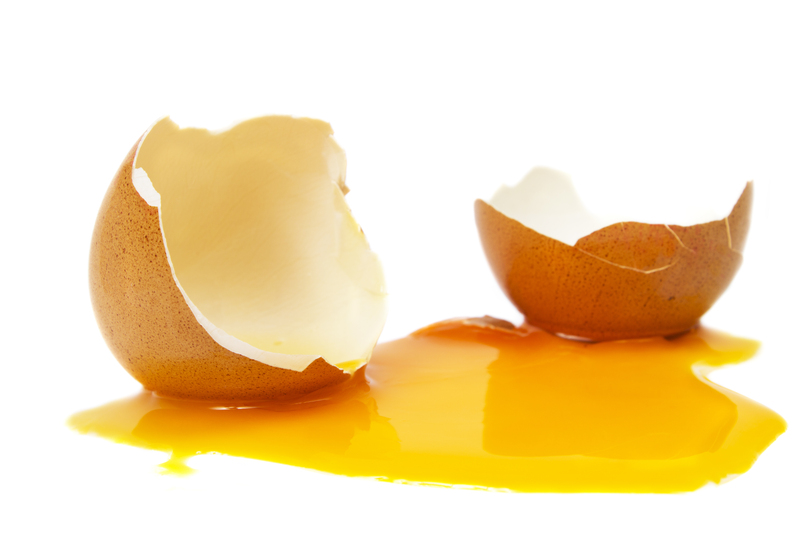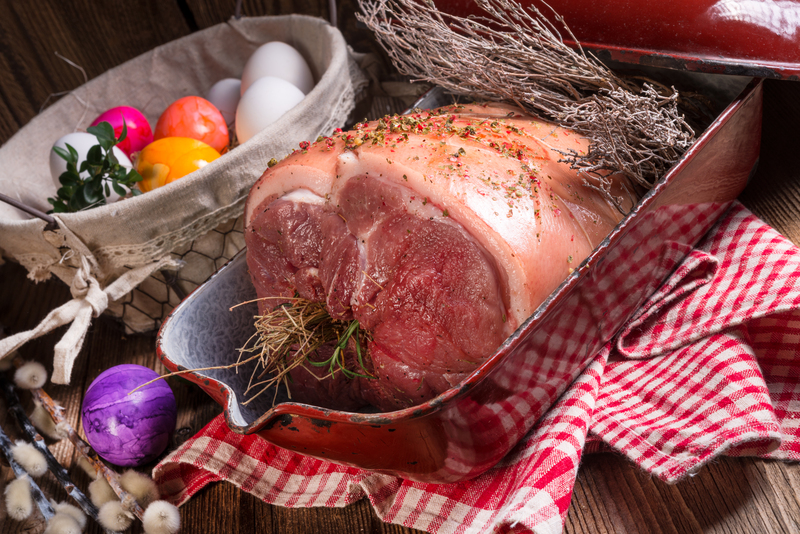Jewelry Cleaning Craft: Techniques for Resplendent Pieces
Posted on 13/09/2025
Jewelry Cleaning Craft: Techniques for Resplendent Pieces
Jewelry is more than just a fashion accessory. These precious adornments signify cherished memories, personal style, and sometimes, family heritage. Over time, even the most exquisite jewelry pieces succumb to tarnish, dust, and daily grime. Mastering the art of jewelry cleaning craft is essential for preserving their brilliance and ensuring lasting beauty. In this all-encompassing guide, we explore the latest tips, time-honored methods, and expert insights for keeping your treasured jewels shining bright.
Why Jewelry Cleaning Matters
From engagement rings to vintage brooches, jewelry cleaning is a practice that goes beyond simple aesthetics. Let's delve into why regular jewelry care is critical for every jewelry owner:
- Longevity: Proper cleaning extends the lifespan of pieces, fending off permanent damage.
- Radiance: Regular maintenance restores the sparkle and brilliance that make jewelry eye-catching.
- Value Preservation: Clean, well-maintained pieces usually keep or increase their value.
- Hygiene: Jewelry can trap oils, bacteria, and allergens. Effective cleaning ensures health safety.
- Emotional Significance: Maintaining keepsakes keeps their sentimental value intact.
The Risks of Neglect
Dirt, sweat, and pollutants can corrode metals, weaken prongs, and cloud gemstones. Neglected jewelry often suffers irreversible damage--making routine jewelry cleaning not just beneficial, but essential.

Understanding Your Jewelry: Materials Matter
Before diving into the craft of jewelry cleaning, identify your piece's materials. Different metals and stones require unique care. Here's a helpful overview:
- Gold & Gold-Filled: Durable and non-tarnishing, but prone to scratching.
- Silver & Sterling Silver: Highly prone to tarnish, needing gentle, frequent polishing.
- Platinum: Dense and resilient, yet susceptible to fine scratches.
- Diamonds: Extremely hard, but grease loves diamond surfaces.
- Pearls: Delicate, organic, and sensitive to chemicals and abrasives.
- Gemstones: Vary widely--softer stones like opal require extra caution; sapphires and rubies are hardier.
Pro Tip:
When in doubt, consult a jeweler or refer to the manufacturer's care guide before cleaning any fine jewelry at home.
Home Jewelry Cleaning Craft: Step-by-Step Techniques
The foundation of DIY jewelry cleaning is simple: gentle methods yield sparkling results. Here's a comprehensive guide to cleaning jewelry at home:
Common Supplies for Jewelry Cleaning
- Soft-bristled toothbrush
- Microfiber or lint-free cloth
- Mild dish soap or gentle cleaning solution
- Lukewarm water
- Small bowl
- Jewelry polishing cloth (optional, for fine metal care)
Basic Cleaning Methods
- Soak: Mix a few drops of mild dish soap in a bowl of lukewarm water. Place your jewelry in the solution for 10-20 minutes to loosen dirt and oil.
- Brush: Using a soft toothbrush, gently brush around crevices and under gemstones. Never scrub aggressively, as it may loosen or scratch settings.
- Rinse: Rinse the jewelry under lukewarm running water. Make sure to plug the sink drain to avoid accidental losses.
- Dry: Pat jewelry dry with a lint-free cloth. Avoid paper towels, which can scratch metals and stones.
- Polish: Use a specialized jewelry polishing cloth for extra shine, especially for pieces of silver or gold.
Note: Never submerge jewelry with glued settings (such as vintage items) or porous stones (like opals or turquoise) in water.
Advanced Home Jewelry Cleaning Techniques
- Baking Soda Paste (for Silver): Mix two parts baking soda with one part water. Rub gently with a cloth, rinse, and buff dry.
- Aluminum Foil Bath (for Heavily Tarnished Silver): Line a bowl with foil, fill with hot water, add a tablespoon each of baking soda and salt, and soak the piece briefly. The tarnish will transfer to the foil.
- Alcohol Solution (for Gold or Diamond Rings): Dip a cotton swab in an isopropyl alcohol solution to sanitize and lift grime from tough spots.
Special Considerations for Delicate Pieces
Pearls, opals, and emeralds are easily damaged. For these, simply wipe with a damp cloth and store away from harsh sunlight or chemicals. Avoid ultrasonic cleaners and harsh chemicals at all costs.
Professional Jewelry Care: When to Seek Expert Help
While DIY jewelry cleaning craft is sufficient for most routine cleaning, some situations demand professional jewelry cleaning:
- Visible damage to settings or stones
- Complex pieces with intricate designs
- Antique or high-value heirlooms
- Substantial buildup that home methods can't remove
- Pre-sale or appraisal cleaning
Professionals have access to ultrasonic cleaners, steamers, and polishing machines, as well as the skills necessary to inspect for loose stones or compromised prongs--protecting your investment.
Common Jewelry Cleaning Mistakes (And How to Avoid Them)
- Using Harsh Chemicals: Bleach, acetone, and ammonia can etch metals, dissolve glues, and damage porous stones.
- Submerging Fragile Jewellery: Water can seep into porous stones and behind settings, causing warping and discoloration.
- Too Much Force: Aggressive brushing or polishing can loosen settings or scratch delicate surfaces.
- Ineffective Drying: Storing wet jewelry fosters tarnish and corrosion.
Best Practice Tips
- Test clean a small area first--particularly with vintage or unknown materials.
- Read care labels and manufacturer recommendations.
- Store each piece separately to avoid scratching.
- Insure high-value pieces and have them checked annually by a jeweler.
Specialty Cleaning Solutions
The market offers numerous commercial jewelry cleaners tailored for every material--silver dips, gold foams, and all-purpose sprays. These specialized solutions are convenient but must be used carefully. Always read the instructions and ensure compatibility with your jewelry's components.
Ultrasonic Cleaners:
Ultrasonic cleaners use high-frequency sound waves to dislodge stubborn dirt. They are ideal for hard gemstones (like diamonds) and solid metals but are unsuitable for porous, organic, or antique jewelry.
DIY vs. Commercial Cleaners: What's Best?
- DIY methods: Cost-effective, eco-friendly, and safer for most pieces.
- Commercial solutions: Offer quicker results and greater cleansing power for certain materials (like heavily tarnished silver).
When in doubt: Always err on the side of caution. If unsure of a cleaner's suitability, stick with milder DIY techniques.
Best Practices for Jewelry Storage and Preventive Maintenance
Proactive care is as vital as regular cleaning. Thoughtful storage and preventative measures minimize the need for intensive cleaning and reduce wear.
- Keep jewelry dry: Remove pieces before showering, swimming, or washing hands.
- Avoid direct sunlight and humidity: Store jewelry in a cool, dry place, ideally in a lined jewelry box or individual cloth pouches.
- Separate metals and gemstones: Prevent scratches and unwanted chemical reactions by organizing pieces individually.
- Remove jewelry during physical activities: Sports, gardening, and chores expose jewelry to impact and grime.
Clean jewelry regularly--preferably once a month--and spot-clean lightly worn items after outdoor or kitchen work.
Eco-Friendly Jewelry Cleaning Craft
Green cleaning is increasingly popular among conscious consumers. Here are some natural, safe options:
- Baking Soda: A gentle abrasive, perfect for tarnished silver.
- White Vinegar: Mix with water for gold pieces (avoid stones that can react).
- Lemon Juice: Lightly brightens gold and brass but avoid using on stones or pearls.
- Castile Soap: An all-natural substitute for commercial dish soap--safe, non-toxic, and biodegradable.
Always rinse thoroughly after cleaning and dry pieces completely before storing.

FAQs About Jewelry Cleaning Techniques
- How often should I clean my jewelry?
For pieces worn daily (like engagement rings), clean at least once a week. For occasional wear, monthly cleaning is sufficient. - Can all jewelry be cleaned at home?
Most can, but antique and delicate items should be taken to a professional to avoid damage. - Are ultrasonic jewelry cleaners safe for all stones?
No--avoid using on pearls, opals, emeralds, or any treated/porous stones. - How do I clean jewelry with intricate designs?
Use a soft-bristled brush and take extra care around small crevices to avoid loosening stones.
Conclusion: Shine Brightly with the Jewelry Cleaning Craft
Mastering jewelry cleaning techniques at home is an invaluable part of caring for your most treasured pieces. By understanding material-specific needs, using the proper tools and products, and staying vigilant against damage, you'll ensure your jewelry displays its resplendent, head-turning allure for years to come. Commit to regular care, and every gem in your collection will sparkle like new.
Related Topics:
- Best jewelry cleaning kits for home use
- Guide to gemstone care and maintenance
- How to create a home jewelry cleaning schedule




